I just recently got SH3, but I've found it incredibly engrossing. So much so that I felt compelled to make a pseudo-documentary of my current U-45's exploits.
- - - - -
U-45; Type VIIB
U-Boot Flotille Saltzwedel
Wilhelmshaven, Germany
Officers Aboard
Commander:
Oberleutnant zur See Matthias Himmelsdonner
Chief Engineer:
Oberleutnant Ingenieur Volkmar Schäfer
Artilleryman, IWO:
Leutnant zur See Gottfried Bargsten
Navigator, IIWO:
Oberfähnrich zur See Herbert Lindner
U-45 - Patrol I (Test Run)
August 1st, 1939 - August 5th, 1939
The boat's first patrol took place on August 1st, 1939, but immediately ran into problems. Faulty gauges, engine troubles and mechanical failures forced her to return to Wilhelmshaven by August 5th for urgent repairs and refitting.
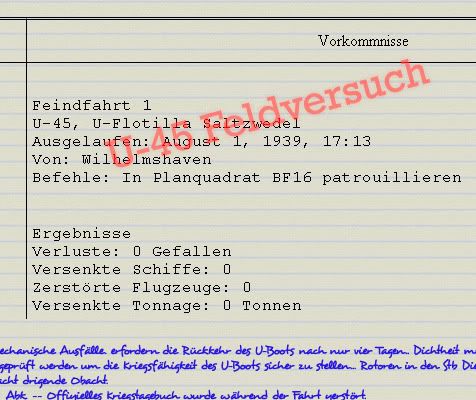
The commander's journal was lost in an unfortunate flooding accident, resulting in an understandably short patrol report.
U-45 - Patrol II (Test Run)
August 25th, 1939 - September 2nd, 1939
No Additional Officers or Crew Changes
By August 25th U-45 was once again ready for a test run, this time performing admirably - particularly compared to her first abysmal outting due to mechanical failures. With everything shored up, the crew undertook the patrol drill with due diligence - reaching their intended grid ahead of schedule. Torpedo and driving drills filled the late days of August as this training photo demonstrates:
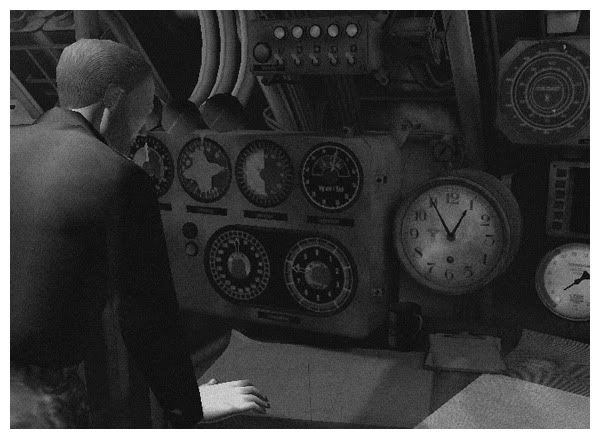
Unfortunately, the training drill was cut short; due to the impending threat of war the U-Boat was called back. Cruising through the Straits of Dover early on the 1st of September on its way back to Wilhelmshaven, the boat wouldn't see peace in the English Channel again.
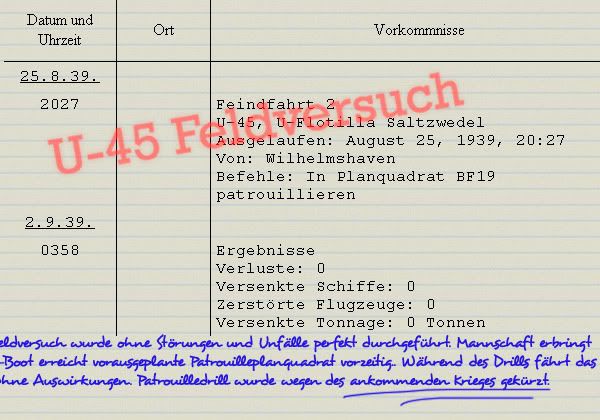
The boat would be fitted with a full load of G7e and G7a torpedoes and fuel and supplies would be topped off so that it could begin action immediately...
U-45 - Patrol III
September 3rd, 1939 - September 9th, 1939
Additional Officers
Crew Chief:
Oberfähnrich zur See Adolf Kessler
Kaleun Himmelsdonner greeted his new crew chief upon U-45's return to Wilhelmshaven, but there was no time for pleasantries. War with Poland had erupted almost moments ago and there was speculation that Britain and France would uphold their alliance with Poland and declare war on Germany.
Crew on the dockyard worked tirelessly to restock the U-Boot's food, inspect her hull, top off her fuel, and load her with as many torpedoes as she could carry. U-45 managed to pull out of Wilhelmshaven after an astonishingly short 36 hour layover.
Slipping past the East Frisian Islands a message came from the FdU giving word that the UK and Germany were at war.
As U-45 made its way through the narrow Straits of Dover, the watch crew sighted a small freighter to the west travelling slowly northeast. Himmelsdonner immediately plotted an intercept course. Under the cover of night, just after 2200 "
Taufen zur Sehrohrtiefe!" echoed through the ship as she dived to periscope depth to intercept her first vessel of the war.
Moments later torpedoes were in the water and U-45 turned hard aport. Half a minute later the explosion of the warheads deafeningly loud over the hydrophones confirmed their trajectory.
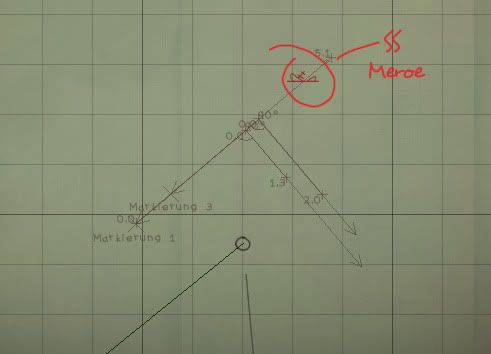
(
After numerous times playing the torpedo and convoy naval academy training missions, this was my first case of firing a torpedo completely manually...it may have taken a while to sink, but it did
sink).
Himmelsdonner ordered the ship immediately surfaced to survey the damage.
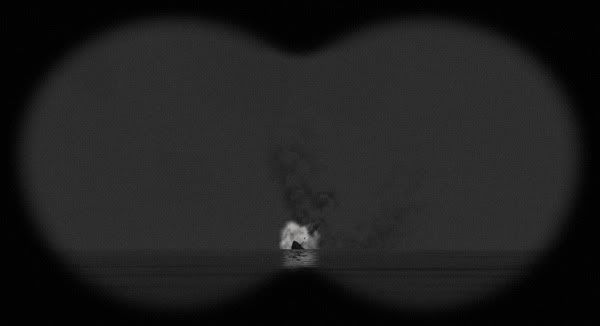
After a short victory celebration alarm set in as an escort vessel was quickly overhead.
(...Notice that hydrophone contact on the map above? I didn't...This is what happens when you up time compression when you shouldn't.)
As fast as he'd come up, Himmelsdonner immediately brought the ship back down with an emergency dive. U-45 learned its first harsh lessons as the bow of the ship plunged into the floor of the English Channel and scraped across the silty bottom. Damage reports came flooding in. The forward torpedo room and bunks were flooding; water up to the ankles had alreay filled the command room. Repair duties were immediately assigned.
Then more bad news from the radio crew "
Wabos!" Depth charges exploded all around the ship; new reports came in of flooding in the aft torpedo room as well. The force scraped the boat across the bottom; glass on gauges broke and lights shattered. It looked grim, but after nearly 10 charges had gone off nearby they stopped falling. It seemed the escort crew thought it had destroyed the Type VIIB.
U-45 was still in deep trouble. Hurried work contined 48 meters under the water. With the flooding under control and the hydrophones clear, Himmelsdonner ordered a full reverse in an attempt to lift them off the seafloor, but to no avail. As a last resort he blew the ballast tanks. The depth gauge finally ticked its way up - 47m and climbing.
Minutes later the sub broke the surface and the damage was assessed. The flooding had abated and the hull seemed intact, but the conning tower wasn't so fortunate. Both periscopes and the deck gun were irreparably damaged.
Not resigned to defeat so easily - even without the ability to effectively attack while submerged, Himmelsdonner ordered the ship to continue west through the English channel. With an UZO as their only aiming device they managed to engage and sink numerous small vessels (without crash diving into the seafloor...again).
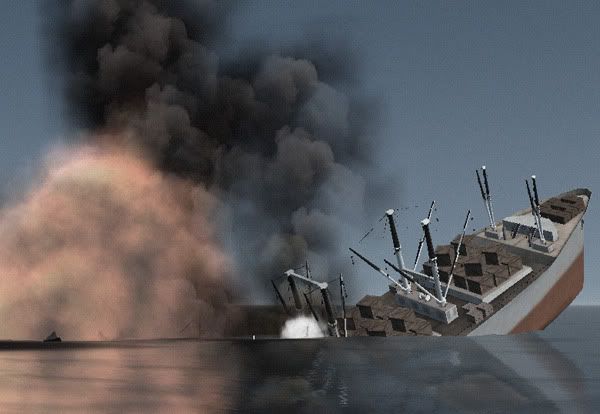
The SS Trentonia and its load of iron flounder to the bottom of the channel from one of U-45's UZO-targeted attacks.
Expending 12 of 14 torpedoes, U-45 only managed to sink just under 10k in tonnage. Its first wartime patrol was a story of miraculous survival through poor decisions. No crew were lost. The patrol was cut short due to mechanical troubles again - this time they just happened to come from the commander instead of the dockyard.

Can they manage to pull their luck and leadership around and become a truly successful U-Boat?
...Well, I don't know if I can do much worse than crashing my boat into the seafloor and getting depth charged.